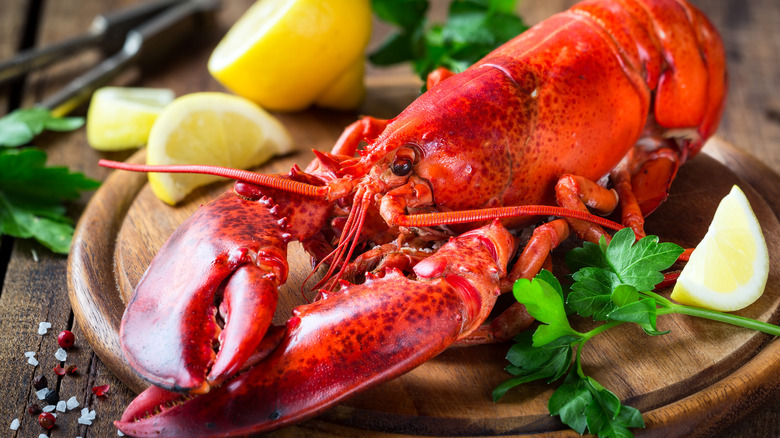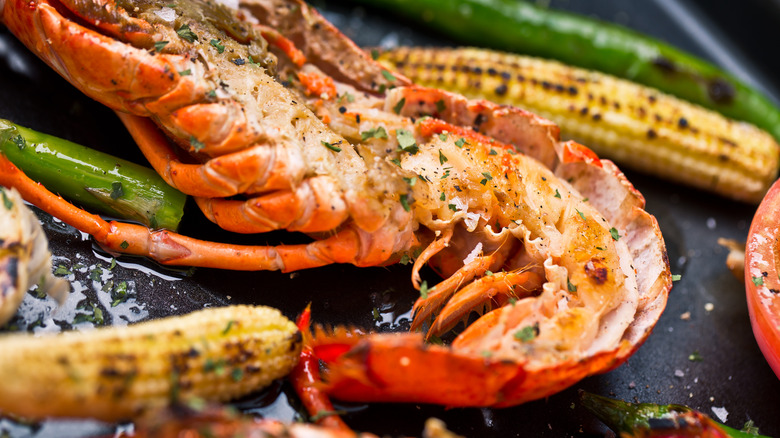Why A Big Pot Of Boiling Water Is The Wrong Way To Cook Lobster
In the pop culture sphere, the image of a big pot of boiling water ready and waiting for a lobster to be thrown into it is the typical go-to when one thinks about cooking lobster. Funny, this notion of cooking a lobster in a huge pot of boiling water has long been considered the "right" method. But of the many lobster myths it's time you stop believing, this one might be among the most egregious. If you're looking for a tender, flavorful piece of seafood, boiling your lobster in a large pot of water will not yield the desired result. In fact, it will likely do just the opposite, seeping the flavor and texture right out of your lobster and flushing money down the drain for a rare treat gone wrong. It's time to get the facts about how to properly cook lobster.
There are several factors to consider if you want to cook lobster tails to perfection or an entire lobster altogether. The first of which is how boiling your lobster does more harm than good to the overall flavor of your fish dish. Although this method is relatively simpler than other means of cooking, the large pot of boiling water risks overcooking your lobster beyond tender into a rubbery chunk of inedible and bland seafood. The overwhelming fishy smell and generally less-than-pleasant texture is enough to have you consider other options that will lead to a more succulent and delicious meal.
How you should really cook lobster instead
If you want a better way to cook your lobster, there are a myriad of methods that surpass boiling in a big pot of water by leaps and bounds. One option, albeit controversial, is to sous vide your next lobster dinner. This trendy method allows you to cook your lobster in a vacuum-sealed bag, locking in the flavor and avoiding the dreaded blandness that comes from a plain water boil. Steaming is another excellent method, which uses the residual heat from boiling water to cook the lobster meat. This will yield a more fish-forward flavor and a softer bite.
For a more flavorful way of cooking, baking your lobster is also a great idea. This allows you to add your favorite seasonings and gets the meat to an especially tender consistency. Poaching your lobster in butter, while more labor-intensive, is definitely a go-to for the most savory flavors and delicate textures. Getting a little more experimental, you can also give a go at grilling your lobster either on a stovetop or barbecue. This works especially well with lobster tails, which you can simply butterfly, season with a butter binder, and slap on the grill with a relatively quick and simple turnaround time. However you prepare your lobster, make sure to take care so that you get the juiciest and best seafood meal possible.

